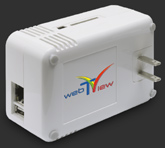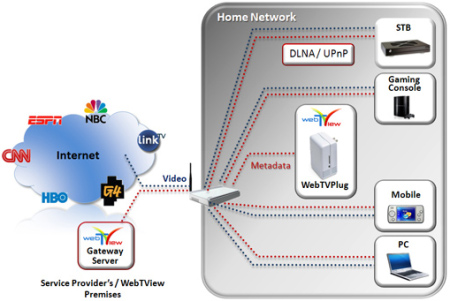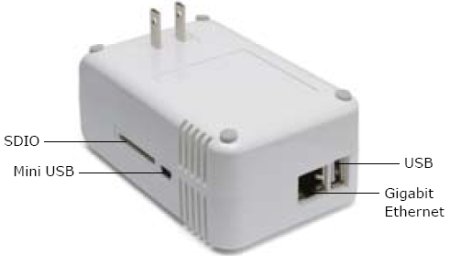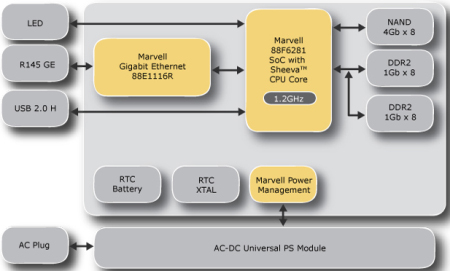IPTV receiver taps Linux plug-computer design
Aug 12, 2009 — by Eric Brown — from the LinuxDevices Archive — 5 viewsAn Israeli Internet video search and classification vendor has announced an IPTV receiver based on Marvell's Linux-based SheevaPlug Plug Computer reference design. WebTView's compact, low-power WebTVPlug device connects to the company's WebTView service to enable Internet TV on any DLNA/UPnP-enabled home device, says the company.
Announced in June 2008, WebTView's end-to-end software IPTV platform delivers video content to TVs, PCs, and mobile devices, and specializes in automatic scanning of the Internet "to build a normalized and unified Internet video catalog," says the company. Millions of videos are said to be available, automatically classified according to languages, genres, quality, and publishers.

WebTVPlug

WebTVPlug networking diagram
SheevaPlug Plug Computer
Marvell's SheevaPlug hardware/software development kit can be used as the basis for a variety of always-on home automation devices and service gateways, says Marvell. Resembling a "wall-wart" power adapter, the SheevaPlug draws 5 Watts, runs on embedded Linux, and boasts completely open hardware and software designs, says the company.

Marvell SheevaPlug Plug Computer
The $100 SheevaPlug platform and Plug Computer designs are built around the Marvell 88F6000, or "Kirkwood" SoC . The Plug Computer is based on the high-end 88F6281 version of the Kirkwood, with a Sheeva CPU core clocked to 1.2GHz. The Sheeva core combines elements of Marvell's earlier Feroceon (used by Orion) and XScale (Marvell's PXA SoCs) architectures, both of which implemented ARM Ltd.'s ARMv5 architecture, similar to ARM Ltd.'s own "ARM9" cores.
SheevaPlug block diagram
(Click to enlarge)
The SheevaPlug Plug Computer is further equipped with 512MB of DRAM and 512MB of flash. The tiny embedded PC also includes gigabit Ethernet and USB 2.0 ports. The SheevaPlug development kit supports standard Linux 2.6 kernel distributions, including specific support for ARM ports of Fedora, Ubuntu, Debian, and Gentoo, says the company.
Early hardware licensees of the SheevaPlug design include Ctera Networks for its CloudPlug NAS device, and CloudEngines for its Pogoplug, which enables remote viewing of external storage devices via a web browser. Marvell recently announced that four vendors of networked-attached storage (NAS) devices plan to deliver devices based on the design. The partners include Buffalo, D-Link, LaCie, and Seagate.
Stated Eli Fux, WebTView CEO and Co-founder, "WebTVPlug is the perfect solution that enables the most updated content delivered from the Internet on any consumer electronic device."
Stated Simon Milner, VP and GM of the Enterprise Business Unit, Consumer and Communications Business Group at Marvell Semiconductor, "WebTView's expertise with Internet video and its smart software will help bring Internet videos to the home and will extend the Plug Computer's reach even further among today's YouTube generation."
Availability
The WebTVPlug is shipping now for a suggested retail price of $100, says WebTView. The company did not list pricing for its WebTView service. More information may be found here.
This article was originally published on LinuxDevices.com and has been donated to the open source community by QuinStreet Inc. Please visit LinuxToday.com for up-to-date news and articles about Linux and open source.
